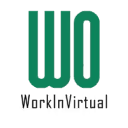The Limitations of Traditional Resumes
Traditional resumes have long been the cornerstone of job applications, yet they come with significant limitations that can hinder a candidate’s ability to fully showcase their skills and experiences. One of the primary shortcomings is their static nature; a resume is essentially a snapshot in time, capturing only a brief overview of a candidate’s career history and qualifications. This format often fails to convey the dynamic and evolving nature of an individual’s professional journey.
In addition, traditional resumes struggle to effectively illustrate the practical application of skills, particularly in fields that demand a high degree of creativity or technical expertise. For example, a software developer may list their proficiency in various programming languages and frameworks, but a resume alone cannot demonstrate the complexity and innovation of their coding projects. Similarly, a graphic designer’s resume might detail their experience with design software, but without visual work samples, it is challenging for potential employers to gauge their creative portfolio.
Another critical issue with traditional resumes is the difficulty of standing out in a crowded job market. With many applicants presenting similar qualifications, resumes often blur together, making it hard for hiring managers to discern the unique strengths and capabilities of each candidate. This is particularly problematic in competitive industries where personal branding and distinctiveness are crucial for career advancement.
Specific scenarios where traditional resumes fall short include roles that require demonstrable project experience. For instance, in technical positions, having a detailed digital portfolio that showcases completed projects, coding samples, and problem-solving techniques can provide a more comprehensive view of a candidate’s abilities. Likewise, for creative roles, an online portfolio filled with diverse work samples can vividly illustrate a candidate’s artistic vision and execution, far beyond what a list of job titles and duties can convey.
Ultimately, while traditional resumes remain a fundamental part of the job search process, their limitations underscore the importance of supplementing them with more dynamic and illustrative tools, such as digital portfolios, to truly capture the full spectrum of a candidate’s skills, experience, and potential.
The Power of Portfolios and Their Complementary Role to Resumes
A professional portfolio is an invaluable tool in modern job search strategies, serving as a dynamic complement to the traditional resume. Unlike a resume, which provides a concise summary of a candidate’s work history and skills, a portfolio offers a more comprehensive and tangible showcase of one’s abilities. This can take various forms, from digital websites and online portfolios to physical binders and creative displays. Each format can be tailored to suit different industries and job roles, making portfolios incredibly versatile.
For instance, a digital portfolio might include a combination of work samples, project descriptions, client testimonials, and even multimedia elements like videos and interactive graphics. This allows candidates to present their work in a visually appealing and engaging manner. On the other hand, a physical binder could be more suitable for roles in art, design, or fields where tactile elements are crucial. Regardless of the format, the storytelling aspect of portfolios is vital. They not only showcase real-world applications of skills but also provide a narrative that highlights a candidate’s journey, achievements, and unique contributions.
Statistics underscore the impact of portfolios in the recruitment process. According to a survey by CareerBuilder, 53% of hiring managers consider a portfolio a deciding factor in their hiring decisions. This is because portfolios offer a more holistic view of a candidate’s capabilities, going beyond the static information found in resumes. They provide context and depth, allowing employers to see how a candidate’s skills translate into real-world results.
Quotes from hiring managers further highlight the importance of portfolios. Jane Smith, a senior recruiter at a leading tech firm, states, “Portfolios give us insight into a candidate’s thought process and problem-solving abilities. They demonstrate not just what a person has done, but how they approach their work, which is crucial for roles that require creativity and innovation.”
In conclusion, incorporating a portfolio into your job search strategy can significantly elevate your personal branding and career advancement efforts. By providing a more detailed and engaging presentation of your skills and accomplishments, portfolios serve as a powerful complement to traditional resumes, helping you stand out in a competitive job market.
The Benefits of Using a Portfolio in Your Job Search
In the competitive landscape of today’s job market, a traditional resume alone often fails to capture the full spectrum of a candidate’s capabilities. Incorporating a portfolio into your job search strategy can significantly enhance your visibility and create a lasting impression on recruiters. Unlike a resume, which typically provides a linear and static account of your professional history, a portfolio offers a dynamic and multifaceted narrative of your career journey and achievements.
One of the foremost advantages of utilizing a portfolio is its ability to tell a compelling story. Through carefully curated work samples, case studies, and project outcomes, a portfolio can vividly illustrate your skills and accomplishments. This storytelling aspect can make you more memorable to potential employers, as it provides concrete evidence of your capabilities and how you’ve applied them in real-world scenarios. For instance, a creative portfolio might showcase a series of design projects, each accompanied by a detailed explanation of the creative process and the impact of the final product.
Moreover, a digital portfolio enhances personal branding by presenting a cohesive and professional image. It allows for a more personalized approach to showcasing your talents, reflecting not just what you have done but also who you are as a professional. This personalized touch can set you apart from other candidates who rely solely on resumes. Portfolios are particularly effective for demonstrating technical skills, creative abilities, and problem-solving acumen through tangible examples.
Furthermore, portfolios can be instrumental in career advancement by providing a platform to display continuous learning and professional development. Whether it’s a collection of certifications, published articles, or detailed project reports, a well-maintained portfolio can serve as a testament to your ongoing commitment to excellence. This level of detail and authenticity can significantly bolster your credibility, making you a more attractive candidate in the eyes of recruiters.
In essence, integrating a portfolio into your job search not only amplifies your visibility but also constructs a robust and persuasive narrative around your professional life. By showcasing your skills, achievements, and potential in a dynamic format, you can elevate your job search beyond the limitations of a traditional resume.
Actionable Tips for Building and Showcasing an Effective Portfolio
Creating a professional portfolio is an essential step in elevating your job search beyond traditional resumes. It enables you to showcase your skills, work samples, and personal branding effectively. To start, identify key projects that highlight your expertise and align with the role you are targeting. Select work that demonstrates a range of skills and achievements, providing a comprehensive view of your abilities.
Once you’ve chosen your projects, organize the content logically. Start with a strong introduction that summarizes your career highlights and professional background. Follow this with individual sections for each project, detailing the objectives, your role, and the outcomes. Ensure each section is clear and concise, using bullet points or subheadings to improve readability.
Visual appeal is crucial in a digital portfolio. Choose a clean, professional design that reflects your personal brand and is easy to navigate. High-quality images, videos, and graphics can enhance the presentation of your work samples. Pay attention to typography and color schemes to maintain a consistent and polished look.
Selecting the right platform or format for your portfolio depends on your target industry. For creative fields such as design or photography, platforms like Behance or Adobe Portfolio are ideal. For more professional or corporate roles, consider using LinkedIn or creating a personal website using platforms like WordPress or Wix. Ensure the platform you choose allows for easy updates and is mobile-friendly.
When showcasing your portfolio during the job application process, integrate it seamlessly with your resume. Include a link to your online portfolio or attach a PDF version. Promote your portfolio on social media and career websites to increase visibility. LinkedIn is particularly effective for sharing your portfolio with potential employers and networking contacts.
Here is a checklist to guide you in building your portfolio:
- Identify key projects to include
- Organize content logically with clear sections
- Ensure visual appeal and easy navigation
- Select the right platform based on your industry
- Integrate your portfolio with your resume
- Promote your portfolio on social media and career websites
By following these actionable tips, you can create an effective portfolio that significantly enhances your job search and showcases your skills and achievements to potential employers.



